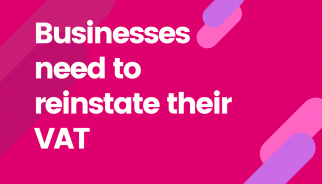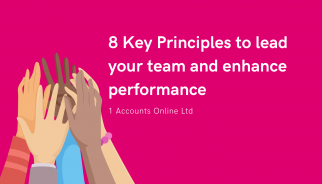
Small to medium-sized businesses have to go the extra mile to stand out from competitors, particularly when those competitors can…

Small to medium-sized businesses have to go the extra mile to stand out from competitors, particularly when those competitors can…

Business Bounce Back Loans – what are they and should you apply for one? Since the scheme launched in May…

Are you finding that some of your clients, some who have previously been good clients, have suddenly become quite fussy?…

The deferral of VAT payments due to coronavirus comes to an end on 30 June and businesses need to take…

With the changes in working practices COVID-19 has caused and the likelihood that many people will be working remotely for…

Whether leading in person or virtually, there are 8 principles that you can adopt to improve team performance. Many organisations…

What’s Going On Now? As time goes on it is getting harder and harder to keep track of all the…

How to stay positive for your family and your team (even if you are scared and worried too) Do you…